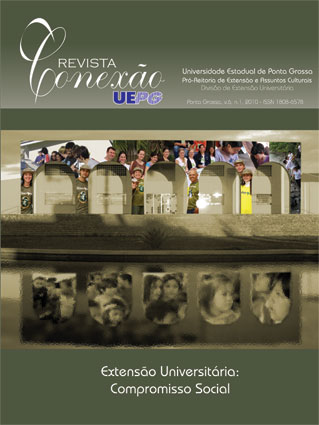TECNOLOGIAS ALTERNATIVAS DE PRODUÇÃO VEGETAL EM TELHADOS VERDES EM ÁREAS DE INTERESSE SOCIAL
Keywords:
Hidrocidades, Agricultura Urbana, Naturação.Abstract
Este artigo é resultado do projeto de extensão apoiado pelo Programa de Bolsas Institucionais de Extensão (BIEXT) da Univeridade Federal Rural do Rio de Janeiro - UFRuralRJ, ocorrido entre junho de 2009 à janeiro de 2010 em duas áreas do Rio de Janeiro, a Vila Cascatinha, em Jacarepaguá e o Mutirão Coqueiral, em Seropédica. O objetivo foi transferir tecnologia de cultivo alternativo para produção vegetal em áreas de interesse social da Baixada de Jacarepaguá e Baixada Fluminense, visando à melhoria da qualidade de vida. A metodologia foi orientada por uma abordagem pesquisa-ação, integrando ensino, pesquisa e extensão (THIOLLENT, 2000; BARBIER, 2002). Como resultado pôde-se concluir que a adoção dos sistemas de produção vegetal em áreas urbanas, utilizandose embalagens descartáveis e a tecnologia de telhados verdes, pode se tornar um veículo para a identificação do conhecimento intrínseco dos membros da comunidade, que permite a consolidação e o aproveitamento deste em atividades produtivas.
Downloads
Downloads
Issue
Section
License
a) Authors retain copyright and grant the journal right of first publication with the work simultaneously licensed under a Creative Commons Attribution License that allows others to share the work with an acknowledgement of the work's authorship and initial publication in this journal.
b) By submitting an article to the Revista Conexão UEPG and having it approved, the authors agree to assign, without compensation, the following rights to the Journal: the rights of first publication and the rights to redistribute the article and its metadata to the indexing and reference services that the editors deem appropriate.
c) Readers are free to transfer, print out and use the articles published in the Journal, as long as there is always explicit mention to the author(s) and to the Revista Conexão UEPG and as long as there is no alteration of the original work. Any other use of the texts needs to be approved by the author(s) and by the Journal.






